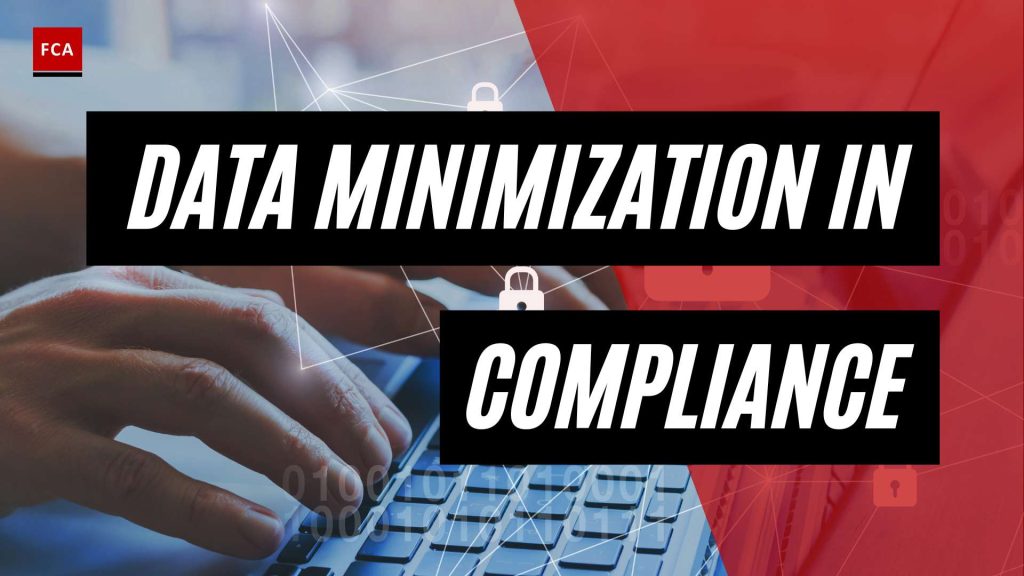Understanding Data Retention in AML Compliance
In the realm of Anti-Money Laundering (AML) compliance, data retention plays a crucial role in ensuring adherence to regulatory standards, constructing risk profiles, and facilitating effective risk mitigation. The importance of data retention lies in the ability to preserve transactional insights, identify anomalies, and maintain compliance with regulatory standards.
Importance of Data Retention in AML Compliance
Data retention in AML compliance involves deliberately keeping records of essential information related to financial transactions, customer interactions, and other relevant activities. By retaining data, organizations can construct robust risk profiles, enable proactive monitoring and response, and facilitate effective risk mitigation in the ongoing battle against money laundering (Flagright).
Data retention enables financial institutions to:
- Analyze historical transaction data to detect patterns of suspicious activity.
- Conduct thorough investigations and audits when necessary.
- Provide evidence of compliance with regulatory requirements.
- Support law enforcement agencies in their efforts to combat money laundering.
Types of Data in AML Compliance
Various types of data play a crucial role in effective monitoring and prevention of illicit financial activities in AML compliance. These data types include:
- Transaction data: Details of financial transactions, including amounts, dates, parties involved, and transaction types.
- Customer information: Personal information about customers, including name, address, identification documents, and beneficial ownership information.
- Sanctions lists and databases: Information about individuals, organizations, and countries subject to economic and trade sanctions.
- KYC data: Know Your Customer data, which includes due diligence information collected during customer onboarding.
- Risk assessment data: Data used to assess and assign risk levels to customers, products, and jurisdictions.
- Watchlist data: Data that helps identify individuals or entities with suspected involvement in illicit activities (Flagright).
Financial institutions often integrate diverse data sources to enhance AML efforts, incorporating data such as geographic data, biometric data, and transaction monitoring alerts. This comprehensive approach enables a holistic view of financial activity and strengthens the ability to detect and prevent money laundering activities.
Understanding the importance of data retention and the types of data involved is fundamental to establishing robust AML compliance programs. By effectively retaining and leveraging data, organizations can ensure compliance, mitigate risks, and contribute to the global fight against money laundering and illicit financial activities.
Data Minimization in AML Compliance
To ensure effective compliance with Anti-Money Laundering (AML) regulations, data minimization plays a vital role in safeguarding sensitive information and reducing risks associated with excessive data collection and storage. By adhering to the principles of data minimization and complying with data protection regulations, organizations can streamline their AML compliance efforts while protecting individual privacy.
Principles of Data Minimization
Data minimization is a fundamental principle of data protection regulations, such as the General Data Protection Regulation (GDPR) and the Brazilian General Data Protection Law (LGPD). These regulations emphasize the importance of collecting only the data necessary for the intended purpose (Tookitaki). In the context of AML compliance, data minimization involves collecting and retaining only the personal data that is strictly needed for AML purposes, minimizing the scope of data collected.
By implementing data minimization practices, organizations can reduce the risks associated with data breaches and unauthorized access. This principle suggests restricting access to personal data to authorized personnel, ensuring privacy and security of the collected information (Council of Europe). It also emphasizes that personal data should not be retained longer than necessary for the purpose of AML investigations, further protecting individuals’ privacy.
Data Protection Regulations and AML Compliance
Regulatory frameworks like GDPR and LGPD have direct implications for AML compliance. These regulations require organizations to implement data minimization practices in their AML efforts, aligning with international data protection standards. By integrating data minimization principles, organizations can achieve a more effective and compliant approach to AML compliance (Tookitaki).
Complying with data protection regulations not only ensures adherence to legal requirements but also enhances privacy-preserving and efficient data management systems. Organizations must adopt appropriate technical and organizational measures to secure personal data against unauthorized access, use, and disclosure. By doing so, they can mitigate the risks associated with data breaches and maintain compliance with data protection regulations.
In summary, data minimization in AML compliance emphasizes the collection and retention of only necessary personal data while maintaining compliance with data protection regulations. By implementing effective data minimization practices, organizations can reduce the risks of data breaches, streamline compliance processes, and protect individuals’ privacy. Aligning with regulations like GDPR and LGPD ensures that AML compliance efforts are in line with international data protection standards, safeguarding sensitive information and upholding the trust of customers and stakeholders.
Benefits of Data Minimization in AML Compliance
Data minimization plays a crucial role in effective Anti-Money Laundering (AML) compliance efforts. By minimizing the amount of data collected and stored, organizations can reap several important benefits. Two key advantages of data minimization in AML compliance are reducing data breach risks and streamlining compliance processes.
Reducing Data Breach Risks
Minimizing the amount of data collected and stored is an effective way to reduce the risk of data breaches. The less data an organization retains, the smaller the potential target for cybercriminals. By collecting only the necessary personal data for AML purposes, organizations can significantly reduce the amount of sensitive information they hold, thus minimizing the potential impact of a breach.
Furthermore, data minimization aligns with the principle of “data protection by design and default.” This principle, emphasized by the General Data Protection Regulation (GDPR) and other data privacy regulations, requires organizations to implement appropriate technical and organizational measures to secure personal data against unauthorized access, use, and disclosure (Council of Europe). By limiting the amount of data collected, organizations can focus their efforts on securing a smaller, more manageable dataset, enhancing overall data protection.
Streamlining Compliance Processes
Data minimization can also lead to the streamlining of compliance processes within an organization. By collecting only the necessary data elements required for AML purposes, organizations can reduce the complexity and resources needed for data management and analysis.
Having a smaller dataset allows for more efficient and targeted data analysis. Compliance professionals can focus their efforts on the relevant information, improving the accuracy and effectiveness of their AML detection and prevention efforts. This targeted approach enables quicker identification of suspicious activities and enhances the overall efficiency of compliance procedures.
Furthermore, by minimizing data collection, organizations can save costs associated with storing and securing large volumes of data. This streamlined data management approach helps optimize resources and allocate them to other essential areas of AML compliance.
To ensure effective implementation of data minimization practices, organizations should strike a balance between collecting enough information to fulfill regulatory requirements while avoiding unnecessary data collection that could lead to privacy risks or regulatory non-compliance. By aligning with data privacy regulations, such as the GDPR, organizations can safeguard sensitive information, reduce the risk of non-compliance, and build trust with customers and stakeholders.
By embracing data minimization in AML compliance, organizations can reduce data breach risks, streamline compliance processes, and foster a more efficient and secure environment for their AML efforts. It is crucial for compliance professionals to understand the benefits of data minimization and implement these practices effectively to enhance their AML compliance programs.
Implementing Data Minimization in AML Compliance
To ensure effective AML compliance while prioritizing data privacy, organizations must implement data minimization practices. This involves collecting only the necessary data elements for anti-money laundering (AML) purposes, striking a balance between data collection and privacy.
Collecting Necessary Data Elements
Data minimization in AML compliance emphasizes the importance of collecting only the personal data that is strictly required for AML purposes. By limiting the collection of data to what is necessary, organizations can reduce the risk of data breaches and protect sensitive information.
When determining which data elements to collect, organizations should consider the specific AML requirements and regulations applicable to their jurisdiction. These requirements may vary, but generally include information related to customer identification, transaction details, and risk assessments. By focusing on the essential data elements, organizations can streamline their compliance processes and minimize the exposure of sensitive information.
Balancing Data Collection and Privacy
As data protection regulations, such as the General Data Protection Regulation (GDPR), continue to evolve, organizations must strike a balance between data collection and privacy. While AML compliance necessitates the collection of certain personal data, organizations also need to respect individuals’ privacy rights and ensure compliance with data protection laws.
To achieve this balance, organizations should implement robust data protection measures. This includes maintaining strict access controls, implementing encryption techniques, and regularly reviewing data retention policies. By safeguarding personal data and adhering to privacy regulations, organizations can enhance trust with their customers and demonstrate their commitment to protecting sensitive information.
Implementing data minimization practices not only enhances AML compliance but also fosters a more privacy-preserving and efficient data management system. By aligning with international data protection standards, such as the GDPR, organizations can ensure they meet the requirements of both AML regulations and data privacy laws.
By collecting only the necessary data elements and balancing data collection with privacy considerations, organizations can effectively implement data minimization practices in AML compliance. This approach not only reduces the risk of data breaches but also promotes a privacy-centric environment that aligns with international data protection standards.
Challenges of Data Minimization in AML Compliance
While data minimization is a critical aspect of AML compliance, it presents certain challenges that organizations must address to ensure effective implementation.
Ensuring Accurate Processing and Interpretation
One of the challenges of data minimization in AML compliance is ensuring accurate processing and interpretation of the retained data. As organizations reduce the volume of data they collect and retain, it becomes crucial to ensure that the limited data remains relevant and reliable. Inaccurate or incomplete data can hinder the effectiveness of compliance efforts and lead to potential regulatory violations.
To address this challenge, organizations need robust data quality management processes. This includes implementing data validation and verification techniques to ensure the accuracy and integrity of the retained data. Regular audits and reviews of data sources, data entry processes, and data quality controls are essential to maintain data accuracy and reliability. Collaborating with third-party software providers specializing in data quality solutions can also help organizations improve the accuracy of their data (Financial Crime Academy). By ensuring accurate data processing and interpretation, organizations can enhance the effectiveness of their AML compliance programs.
Balancing Compliance with Business Needs
Another challenge in data minimization is striking the right balance between compliance requirements and business needs. While compliance is paramount, organizations must also consider the impact of data minimization on their business operations. AML officers face the task of aligning compliance efforts with the organization’s overall strategy, leveraging technology and automation to minimize the disruption to business processes (Sanction Scanner).
To overcome this challenge, organizations should involve key stakeholders from various departments in the decision-making process. By collaborating with business leaders, AML officers can identify ways to integrate compliance requirements into the organization’s operations without compromising efficiency. This may involve implementing advanced technologies, such as artificial intelligence and machine learning, to automate data processing and analysis while minimizing the business impact. Striking the right balance between compliance and business needs ensures that AML efforts are effective and sustainable in the long run.
By addressing these challenges, organizations can optimize their data minimization efforts and enhance the overall effectiveness of their AML compliance programs. Adhering to best practices and leveraging technology can help organizations navigate these challenges successfully and ensure compliance with data protection regulations while meeting their business objectives.
The Role of Data Quality in AML Compliance
In the field of Anti-Money Laundering (AML) compliance, the quality of data plays a crucial role in ensuring the accuracy and effectiveness of detection and prevention efforts. The impact of data quality on AML efforts cannot be overstated, as inaccurate or incomplete data can lead to incorrect risk assessments, missed suspicious activities, or false alarms, which can have serious consequences in compliance procedures.
Impact of Data Quality on AML Efforts
Data quality is essential for reliable analysis and identification of potential money laundering activities. High-quality data enables financial institutions and regulated entities to make informed decisions, detect patterns, and assess risks effectively. It helps in uncovering hidden connections, monitoring transactions, and identifying unusual behavior that may indicate illicit activities.
Accurate and reliable data allows AML professionals to develop robust risk models, implement effective transaction monitoring systems, and conduct comprehensive investigations. By having access to quality data, compliance teams can improve the efficiency and accuracy of their efforts, leading to better outcomes in detecting and preventing money laundering activities.
Collaboration with Third-Party Software Providers
In the realm of AML compliance, financial institutions and regulated entities often rely on software applications developed by third-party providers to access and process data. Close collaboration with these providers is crucial to ensure accurate processing and interpretation of data, which is vital for effective AML efforts.
Collaborating with trusted third-party software providers allows organizations to leverage their expertise and advanced technologies to enhance the quality and reliability of data used in compliance procedures. These providers can offer comprehensive and up-to-date screening information, ensuring that financial institutions have access to accurate data for their risk assessments and monitoring activities.
By working together, financial institutions and third-party software providers can address data quality challenges, implement robust data validation processes, and establish effective data exchange mechanisms. This collaboration helps to ensure that the data used in AML compliance procedures is of high quality, resulting in improved efficiency, accuracy, and effectiveness in detecting and preventing money laundering activities.
To maximize the impact of data quality in AML compliance, organizations can also consider partnering with reputable data providers, such as SGR Compliance. These providers focus on ensuring data quality and accurate processing by leveraging in-house expertise and cutting-edge technology. By utilizing their services, financial institutions can streamline their compliance processes and protect their business integrity in AML procedures (LinkedIn).
In conclusion, data quality plays a critical role in AML compliance efforts. It directly impacts the accuracy and effectiveness of risk assessments, transaction monitoring, and investigations. Collaborating with third-party software providers and leveraging their expertise can significantly contribute to enhancing data quality. By prioritizing data quality and establishing strong partnerships, organizations can strengthen their AML compliance procedures and protect themselves against money laundering risks.
Data Minimization and Risk Assessment
In the realm of AML compliance, conducting thorough risk assessments is a fundamental step towards identifying and mitigating potential money laundering risks. These risk assessments involve analyzing various factors such as customers, products, services, and geographical locations to assess the likelihood and impact of money laundering activities (KYC2020). By understanding the risks associated with these factors, financial institutions can develop effective AML compliance programs.
Risk Assessments in AML Compliance
Risk assessments serve as the foundation for a robust AML compliance program. They help institutions identify high-risk areas and allocate resources accordingly. The process typically involves:
-
Identifying potential risks: This involves analyzing customer profiles, transaction patterns, and other relevant factors to identify potential money laundering risks. By understanding the nature of the institution’s business and the types of transactions it handles, AML officers can identify areas that require heightened scrutiny.
-
Assessing likelihood and impact: A comprehensive risk assessment evaluates the likelihood and impact of money laundering activities within the institution. This evaluation considers factors such as customer behavior, transaction volume, and the complexity of the institution’s products and services. By assessing both the likelihood and potential impact, institutions can prioritize their efforts and focus on areas of higher risk.
-
Developing risk mitigation strategies: Based on the identified risks, institutions can develop appropriate risk mitigation strategies. These strategies may include enhanced due diligence measures for high-risk customers, transaction monitoring systems, and regular training programs for staff members involved in AML compliance.
It is crucial for these risk assessments to be conducted regularly to ensure that the institution’s AML compliance program remains effective and up-to-date. By continuously monitoring and reassessing risks, institutions can adapt their compliance procedures to address emerging threats and regulatory changes.
Utilizing Quality Data for Risk Assessments
The effectiveness of risk assessments in AML compliance heavily relies on the quality of the data used. Accurate and reliable data is essential for identifying and assessing potential money laundering risks. Poor data quality can lead to inaccurate risk assessments and hinder the effectiveness of AML efforts (LinkedIn).
To ensure quality data for risk assessments, financial institutions should invest in strategies, technologies, and expertise for efficient data collection and management. This includes:
-
Implementing robust data collection processes: Financial institutions should establish clear procedures for collecting relevant data from various sources, such as customer profiles, transaction records, and external data providers. These processes should ensure the accuracy, completeness, and timeliness of data.
-
Leveraging advanced analytics tools: Advanced analytics tools can help institutions analyze large volumes of data and identify patterns and anomalies that may indicate potential money laundering activities. By utilizing these tools, AML officers can enhance their risk assessments and improve the effectiveness of their compliance programs.
-
Collaboration with third-party software providers: Financial institutions can benefit from partnering with third-party software providers specializing in AML compliance. These providers offer solutions that streamline data collection, enhance data quality, and provide advanced analytics capabilities. By leveraging the expertise and technology of these providers, institutions can enhance the accuracy and efficiency of their risk assessments.
By utilizing quality data and implementing effective risk assessment practices, financial institutions can strengthen their AML compliance programs and better identify and mitigate money laundering risks. A proactive approach to risk assessment, coupled with reliable data, enables institutions to stay ahead of emerging threats and maintain compliance with regulatory requirements.
Consequences of Non-Compliance with Data Minimization
Ensuring compliance with data minimization practices is crucial in the realm of Anti-Money Laundering (AML) to mitigate risks and protect sensitive information. Failing to adhere to data minimization principles can have serious consequences for organizations. Two key aspects of non-compliance include penalties imposed by regulatory authorities and the impact on trust and brand reputation.
Penalties for Non-Compliance
Non-compliance with AML regulations can lead to significant penalties, sanctions, and even criminal charges for both organizations and their officers. The financial repercussions can range from thousands to millions of dollars, depending on the severity of the violation. Regulatory bodies are increasingly stringent in their enforcement efforts to combat money laundering and terrorist financing activities. Therefore, organizations must prioritize data minimization to avoid such penalties and maintain compliance.
Building Trust and Brand Reputation
Implementing effective data minimization strategies in AML compliance not only helps organizations avoid penalties but also plays a crucial role in building trust and maintaining a positive brand reputation. By demonstrating a commitment to data protection and privacy, organizations can enhance customer relationships and establish themselves as trustworthy entities in the eyes of their clients and stakeholders (Financial Crime Academy).
Furthermore, in today’s data-driven world, customers are increasingly concerned about the security and privacy of their personal information. Adopting data minimization practices assures customers that their data is handled responsibly, reducing the risk of data breaches and unauthorized access. This, in turn, fosters trust and strengthens the organization’s reputation.
By prioritizing data minimization in AML compliance, organizations not only mitigate risks but also ensure their operations align with data protection laws such as the General Data Protection Regulation (GDPR). Safeguarding sensitive information and preventing unauthorized access or misuse of personal data are fundamental principles of data protection. Compliance with these principles not only protects the organization but also instills confidence in customers and regulatory authorities.
In conclusion, non-compliance with data minimization practices in AML can result in severe penalties, reputational damage, and increased regulatory scrutiny. Conversely, organizations that embrace data minimization can build trust, enhance brand reputation, and demonstrate their commitment to data protection and privacy. By complying with data minimization principles, organizations can navigate the complex AML landscape with confidence while safeguarding the integrity and privacy of sensitive information.
Data Minimization and Data Protection Laws
In the realm of AML compliance, data minimization plays a vital role in adhering to data protection laws such as the General Data Protection Regulation (GDPR) and the Brazilian General Data Protection Law (LGPD). These regulations require organizations to collect only the data necessary for the intended purpose, promoting privacy and reducing the risk of data misuse or breaches (Tookitaki).
Alignment with GDPR and Other Regulations
Data minimization is a fundamental principle of the GDPR and the LGPD, emphasizing the importance of collecting and processing only the personal data required for AML compliance purposes. By following the principle of data minimization, organizations can streamline their data collection and processing activities, enhancing their AML compliance efforts.
The European Data Protection Supervisor (EDPS) stresses the need for data protection to be a gold standard in AML/CFT compliance processes. The EDPS recommends that legislation on AML measures should align with data protection principles, including data minimization, purpose limitation, data protection-by-design, and individuals’ right to be informed about the collection and processing of their data. These requirements ensure that organizations prioritize privacy and data protection while fulfilling their AML obligations.
Safeguarding Sensitive Information
Data minimization in AML compliance also extends to safeguarding sensitive information. Organizations must take appropriate measures to protect personal data, especially sensitive data related to individuals involved in AML investigations. Restricting access to personal data to authorized personnel and implementing robust security measures are crucial steps in safeguarding sensitive information (Council of Europe).
By adhering to data protection laws and implementing data minimization practices, organizations can ensure compliance with AML regulations while safeguarding individuals’ privacy and personal data. These measures not only enhance AML compliance efforts but also foster a privacy-preserving and efficient data management system that aligns with international data protection standards.
For more information on the intersection of GDPR and AML compliance, you can refer to our article on gdpr and aml compliance.
Data Minimization in AML Compliance Best Practices
Data minimization plays a crucial role in achieving effective and compliant AML (Anti-Money Laundering) efforts. By striking the right balance between data collection and privacy, organizations can enhance their compliance processes while safeguarding sensitive information. Additionally, there are cost and efficiency benefits associated with data minimization in AML compliance.
Striking the Balance between Data Collection and Privacy
Data minimization is a fundamental principle of data protection regulations such as the General Data Protection Regulation (GDPR) and the Brazilian General Data Protection Law (LGPD). These regulations require organizations to collect only the data necessary for the intended purpose, minimizing the data to what is strictly needed. By adhering to this principle, organizations can minimize the risk of data breaches and unauthorized access while ensuring compliance with data protection laws.
To strike the right balance between data collection and privacy in AML compliance, organizations should consider the following best practices:
-
Data Classification: Classify the data collected during AML processes based on its sensitivity and relevance to compliance requirements. This classification helps identify the type of data that needs to be collected and retained, ensuring that only necessary data is processed and stored.
-
Purpose Limitation: Clearly define the purpose for which the data is collected and ensure that it aligns with AML compliance objectives. Avoid collecting data that is not directly relevant to compliance efforts, minimizing the potential risks associated with unnecessary data storage.
-
Restrict Access: Limit access to personal data to authorized personnel who require it for AML compliance purposes. Implement robust access controls and authentication mechanisms to protect against unauthorized access or misuse of collected information.
-
Data Retention Policies: Develop and implement data retention policies that outline the duration for which data collected during AML activities will be retained. Ensure that personal data is not kept longer than necessary for the purpose of compliance or investigations.
Cost and Efficiency Benefits of Data Minimization
Implementing effective data minimization practices in AML compliance can bring several benefits in terms of cost and efficiency:
-
Reduced Storage Costs: By minimizing the amount of data collected and stored, organizations can significantly reduce storage costs associated with maintaining large databases. Storing only relevant data streamlines the storage infrastructure and reduces the resources required for data management.
-
Improved Data Quality: Focusing on collecting only necessary data elements enhances the overall quality of the data. By reducing the volume of irrelevant or redundant data, organizations can improve data accuracy, completeness, and reliability.
-
Streamlined Compliance Processes: Data minimization eliminates the burden of managing excessive data, allowing compliance teams to focus on relevant information. This streamlines AML compliance processes, enabling more efficient data analysis, risk assessments, and investigations.
By adopting data minimization best practices, organizations can enhance their AML compliance efforts while realizing the cost and efficiency benefits associated with streamlined data collection and privacy preservation. These practices align with the principles of data protection regulations like the GDPR and support the overarching goal of safeguarding sensitive information and preventing unauthorized access or misuse of personal data.









